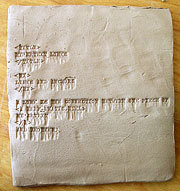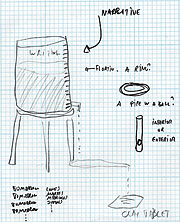Paul Ramírez Jonas
Time and expiration feature prominently in the work of Paul Ramírez Jonas, who for a work called A Longer Day gained a minute of sun by driving west on a highway from New York. As part of Men on the Moon, one of his ongoing projects, Ramírez Jonas seized upon the twenty-three hours of Apollo 11’s communications with NASA during their lunar expedition of July 1969. He then used a homemade re-creation of Edison’s 1877 phonograph to re-record the audio in sixty-second segments onto hundreds of wax cylinders. The major flaw of Edison’s recording technology, unfixed by Ramírez Jonas, was that its inscriptions were erased upon playback. The artists’ cylinders, then, act as inaccessible receptacles that form a self-effacing archive, pushing the distant voices of the Apollo astronauts further away from us.
The loss of the archive, in spite of technologies designed to preserve it, is the subject of a new body of work for the artist. Reproducing texts such as the HTML code for the oldest Web page, Ramírez Jonas types into wet clay using a process and material reminiscent of the first form of writing (Sumerian cuneiform). The artist references both the fallibility of our efforts to preserve ideas, and their resistance to permanence. The tablets, left unfired, begin to degrade upon completion.
Adjacent to the tablet, the artist includes his version of a Roman water clock. Modeled on an earlier Greek clepsydra, or “water thief,” the Romans calibrated the constant leak of water in their horologia ex aqua with sundials. Owing to the sun’s daily cycle, the Roman water clock delineated time in twelve-hour increments; accordingly, it was built to empty itself at sunset and sunrise each day. Ramírez Jonas’s Water Thief will begin to drain at the moment of the public opening, and is set to empty its last drop at 6:00 P.M. on the final day of the exhibition, just as the last notes of Trisha Donnelly’s organ music fade, and the show closes.���� ��������������
����


Oldest Web Page Online and artist’s sketch of installation, 2005������


